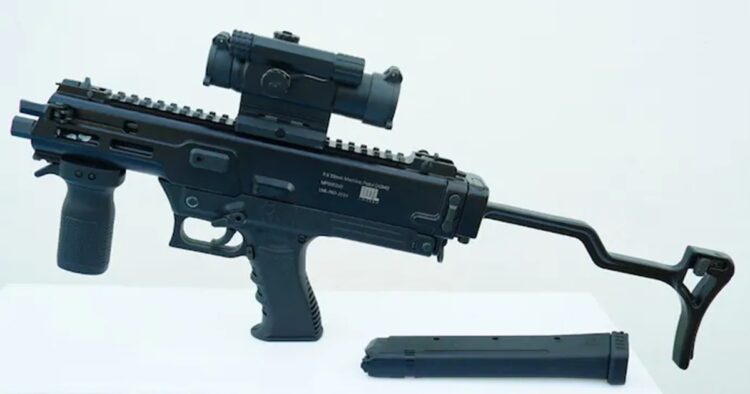India’s promise to self-reliance in defense manufacturing, the Indian Army has inducted 550 domestically produced ‘Asmi’ machine pistols into its Northern Command. Developed in partnership between the Indian Army and the Defence Research and Development Organisation (DRDO), the ‘Asmi’ machine pistol is a fully indigenous weapon crafted to strengthen India’s Atmanirbharta, or self-reliance, initiative in defense capabilities.
Announcing the induction on the social media platform X, the Additional Directorate General of Public Information (ADGPI) of the Indian Army stated, “In a significant boost to the nation’s #Atmanirbharta initiative, #IndianArmy inducted 550 ‘Asmi’ machine pistols into #NorthernCommand.”The ‘Asmi’ machine pistol, named to symbolize “pride, self-respect, and hard work,” was first unveiled in January 2021.
Its development, spearheaded by Lieutenant Colonel Prasad Bansod, is a testament to indigenous engineering capabilities. The weapon was designed and produced in a record four months, utilizing cutting-edge manufacturing techniques, including 3D printing for some components.
The Asmi machine pistol is engineered for close-quarter combat, a necessity in counter-insurgency and specialized military operations within the challenging terrains of Northern Command’s operational zones. The ADG PI post elaborated, “The ‘Asmi’ machine pistol is a robust, compact, and reliable weapon designed for close-quarter battles and specialized operations. Its unique semi-bullpup design allows for single-handed operation both as a pistol and submachine gun.”
This design enhances manoeuvrability, allowing soldiers to operate the weapon effectively even in constrained environments such as urban or jungle warfare scenarios. The semi-bullpup configuration maximizes barrel length while maintaining a compact overall size, providing both power and ease of handling. The weapon also functions as a hybrid, serving as both a pistol and a submachine gun, making it valuable in high-intensity, close-range engagements.
The introduction of the Asmi pistol is not only a tactical upgrade but also represents a strategic step toward reducing dependence on foreign-made small arms. The Asmi was designed to replace the ageing 1A Carbine, India’s domestically produced variant of the Sterling submachine gun, which has been in service since the 1960s. While imported submachine guns like the Brügger & Thomet MP9, Heckler & Koch MP5, and Uzi are currently in use, the Asmi offers a cost-effective alternative. Each unit of the Asmi costs only a third of the price of an MP5, significantly reducing expenditure on foreign arms.

















Comments